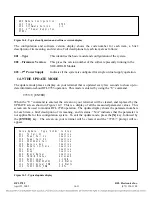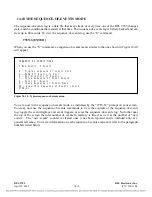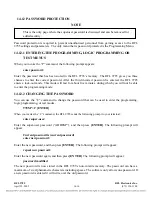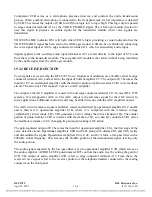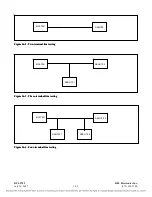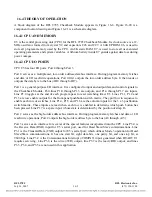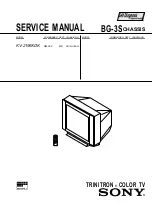
15.3.3
CALL TONE CIRCUIT
The call tone circuit is used to generate call tones to send to the remote station, and detect incoming
call tones. Operational amplifiers U5B and U6B form the call tone circuit, which is controlled by
analog switch U9, photo-coupled isolator U10, transistors Q3 and Q5, and their associated
components.
15.3.3.1
CALL TONE GENERATION
When the PUSH TO CALL switch on the front panel is pressed, a 12-Vdc potential is placed across
edge connector terminals C19 and A20. This will cause an LED inside U10 to light, making its output
go high. This turns on Q5, which pulls U9 pins 9 and 16 low. With U9 pins 9 and 16 held low, the C
and D sections of analog switch U9 close, completing a positive feedback path from U6B to U5B,
causing the circuit to oscillate. Inductor L2 (see note below) and capacitor C46 hold the oscillation at
their resonant frequency, 1800 Hz. This call tone signal is fed to the input of operational amplifier U5B
in the transmitter section (para 15.3.1), where it enters the speech transmission path.
When Q5 is turned on, the logic high at U9 pins 1 and 8 opens the A and B switches in U9. With the A
and B switches open, speech signals from the receiver section (para 15.3.2) are kept out of the call tone
circuit.
15.3.3.2
CALL TONE DETECTION
When the call tone circuit is not generating tones, it is ready to detect incoming tones. In this state, Q5
is turned off and U9 switches A and B open. As a result, the feedback path between U6B and U5B is
kept open, and no oscillations occur. Incoming signals are fed to the input of U5B by way of the
receiver section (para 15.3.2), analog switch U9 switches C and D, and resistor R90. L2 (see note
below) and C46 are connected in parallel across the output of U5B, and will resonate when an 1800-
Hz tone is present in the incoming signal.
If an 1800-Hz tone is present, it will be amplified by U6B and rectified by diodes CR15 and CR17.
The rectified signal is filtered by resistor R102 and capacitor C50, and then fed to U6A-2. Operational
amplifier U6A acts as a comparator, which will turn on transistor Q3 via opto-coupler U12. Q3 drives
a signaling device SP1 or a relay coil connected to terminal A18. REC CALL indicator DS1 is in series
with U12 emitter, and lights to indicate that a call tone has been detected.
When the PUSH TO CALL switch on the front panel is pressed, Q5 is turned on and diode CR19
conducts. This will hold U6A-2 high, disabling the call tone detection function.
NOTE
L2 is equivalent to 77.62 mH and is formed by GIC (general impedance converter) circuit
U11, R116-119 and C64.
RFL 9785
RFL Electronics Inc.
April 25, 2005
15-5
(973) 334-3100





